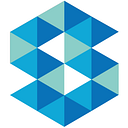Agile product development is an iterative and flexible approach to product development that focuses on delivering customer value quickly and continuously. It emphasizes collaboration, adaptability, and customer feedback throughout the development process. Here are the key elements and steps involved in the Agile product development process:
- Product Vision: Define a clear vision for the product, including the problem it solves, the target market, and the desired outcomes.
- Product Backlog: Create a prioritized list of features, enhancements, and fixes called the product backlog. This list is continuously updated and refined based on feedback and changing requirements.
- Sprint Planning: At the beginning of each iteration or sprint (a time-boxed period, typically 1–4 weeks), the team selects a set of items from the product backlog to work on during that sprint. They determine the scope and define the goals for the sprint.
- Sprint Execution: The development team works on the selected items and collaborates closely with stakeholders, including product owners and customers. They break down the work into smaller tasks and develop, test, and integrate the features incrementally.
- Daily Stand-ups: The team holds short daily meetings to synchronize their work, discuss progress, and address any challenges. Each team member shares what they accomplished, what they plan to do next, and any obstacles they face.
- Continuous Integration and Testing: The development team continuously integrates their work into a shared repository, ensuring that the codebase is always in a releasable state. Automated testing is performed throughout the development process to catch defects early.
- Sprint Review: At the end of each sprint, the team showcases the completed work to stakeholders, including the product owner and customers. Feedback is collected, and any necessary adjustments to the product backlog are made.
- Sprint Retrospective: The team reflects on the sprint and identifies what went well, what could be improved, and any action items for future sprints. This retrospective process helps the team continuously improve its effectiveness.
- Repeat and Adapt: The process continues with subsequent sprints, with the team constantly iterating and adapting based on feedback and changing requirements. The product evolves incrementally, delivering value to customers at regular intervals.
Agile frameworks like Scrum and Kanban are commonly used to implement the Agile product development process. These frameworks provide specific roles, ceremonies, and artifacts to facilitate effective collaboration and communication within the development team and with stakeholders.
At SubcoDevs, we have a strong team of experts who can develop the software your company requires precisely to become well-known worldwide. Contact us right now to order your programs at the best possible price and quality.
